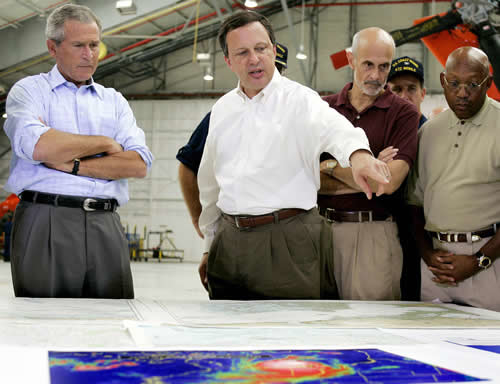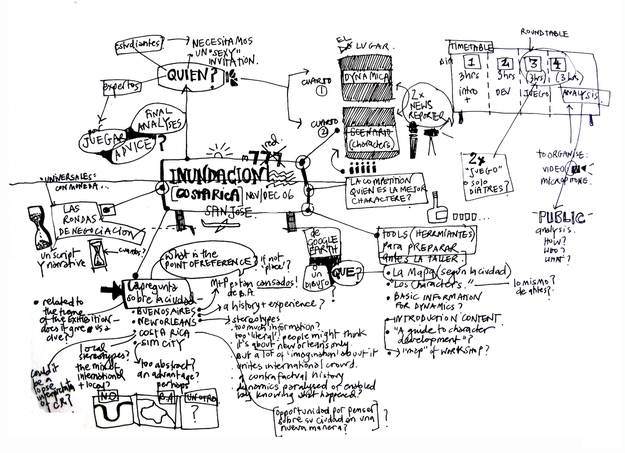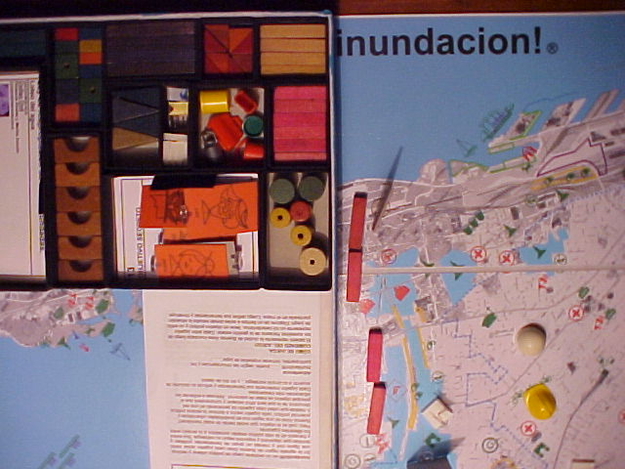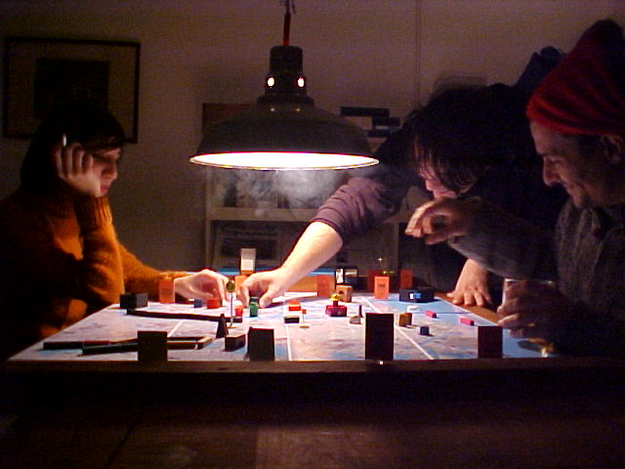"We started working on the game in 2000 after some minor floods hit Buenos Aires," explains Corbalan, who, along with Torroja collaborated with Gustavo Dieguez, Lucas Gilardi, and Daniel Goldaracena. "A few months later, a major flood unleashed a political-technocratic debate in the city." After consulting advisors ranging from environmental specialists to conceptual artists, the collective--then working under the name m777--created inundacion! inesperadas posibilidades urbanas para Buenos Aires (flood! unexpected urban possibilities for Buenos Aires), 2000-2002, a board game in which players respond to a disaster scenario and sometimes even anticipate actual events. "In April 2003, we were playing a session of inundacion! with students and professors from the faculty of architecture at the University of Buenos Aires just as floods started swallowing up Santa Fe, a city in the north of Argentina," recalls Torroja. "One group of players placed a brigade of armed homeowners on the board. On the same day in Santa Fe, neighbors with guns and boats started banding together to defend their properties. The fiction of the game allowed us to analyze a real urban trend that was emerging and ended up repeating itself in New Orleans, albeit with some new twists."
How does the game work? Eight to eighty players are divided into teams. Each selects at random a previously established character, style, and secret goal. Team members must transform these elements into a story, which they present through icons on a map of flooded Buenos Aires. While characters include familiar crisis figures--politician, policeman, and engineer--there are also some surprising ones, such as an anarchist, a gaucho, and an immigrant. Styles range from the ecologically minded to the entrepreneurial, and the secret goal can include any task from starting a refugee agency to attracting tourists to the flood-stricken area. The challenge lies in the game's chance combinations. When I played a round, I ended up on a team with a filmmaker and an architect; we had to find a strategy to deal with a media-savvy geisha running a covert paramilitary gang that was destabilizing the city. Corbalan and Torroja play the role of mediators, who may edit a team's narrative or suggest a new development in what they call "the collective script" produced by each game. In the end, all missions are revealed, and players vote independently on the most convincing team strategy.
However lifelike its scenarios can sometimes be, inundacion! is not just a playful simulation but a project that builds on m7red's earlier practice. To foster conversations between experts and nonexperts, m7red has in the past organized discussions in which participants set up their own police, health care, or currency through popular cultural forms, from games to karaoke. Like Marjetica Potrc, Kyong Park, and Multiplicities, the group moves between architecture and art. Social Lottery--a Borges-inspired project in which citizens suggested and then voted on alternate roles for themselves for a day--was their contribution to the architectural interventions organized in 2003 by the innovative architecture and environmental-design team raumlabor_berlin for the shrinking city of Halle-Neustadt in former East Germany. In Buenos Aires, m7red has often collaborated with Proyecto Venus, an ongoing experimental society initiated by artist Roberto Jacoby in the wake of Argentina's economic collapse.
"We prefer to write scripts instead of designing buildings for catastrophes because they are high-exposure, interactive scenarios for urban actors," says Corbalan. "Architecture and urban planning are sluggish; the crisis offers instant models of transformation where everyday urban situations that we saw at a low speed can suddenly be seen at a fast one." Reflecting on the time-lapse effects of Katrina, Corbalan notes the newfound visibility of poor African Americans and the increased invisibility of illegal immigrants, who avoided rescue workers for fear of deportation. For Corbalan, an unexpected major player was Wal-Mart. With its sophisticated distribution systems, the retail chain was quick to deliver 1,900 truckloads of water and other supplies to flood victims.
"When the weather ends up demonstrating that a retailer can be a faster relief organization than the state, then we have entered a political meteorological era," says Torroja. "Of course there have always been natural catastrophes; what's new is the way in which they are opening up unexpected political scenarios, which we believe individuals should have a chance to explore. Inundacion! allows for consensual alienation in a controlled time, letting players slow down the catastrophe while exploring its possibilities for role changes." And in so doing, the game may be one way to prepare users for a potential crisis. Indeed, if the dynamics generated by disasters anticipate the politics of the future, then inundacion! is an important training ground for the coming citizen.
Berlin-based critic Jennifer Allen is a regular contributor to Artforum magazine.
This article appeared in ArtForum Magazine, November 2005.



